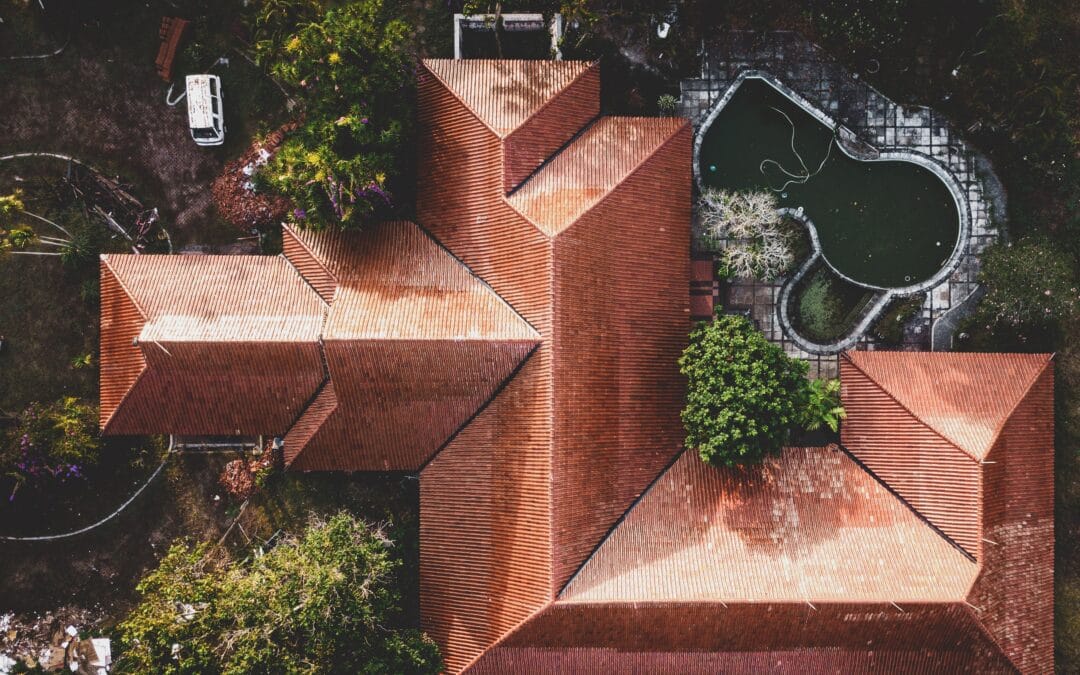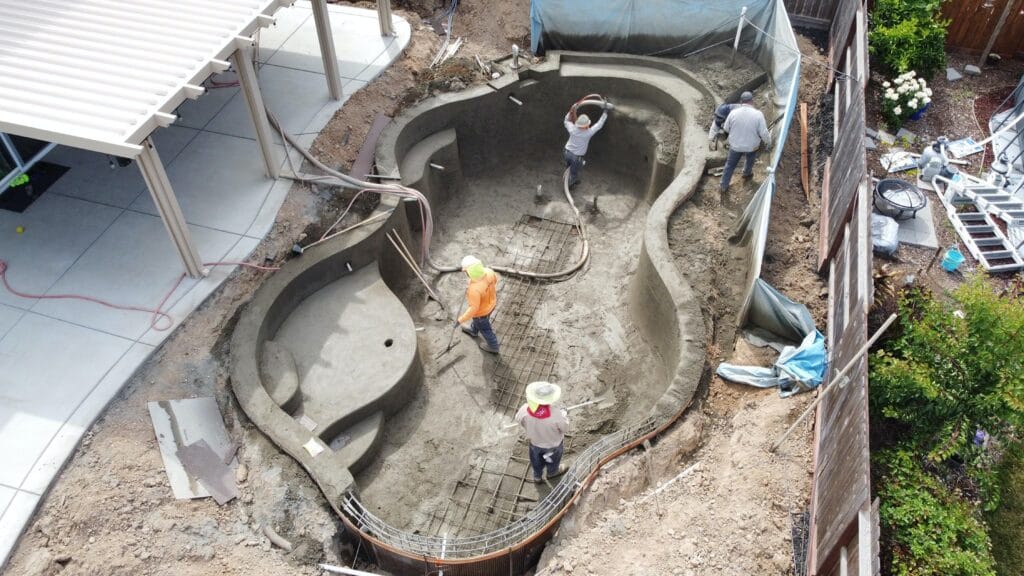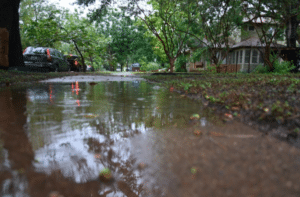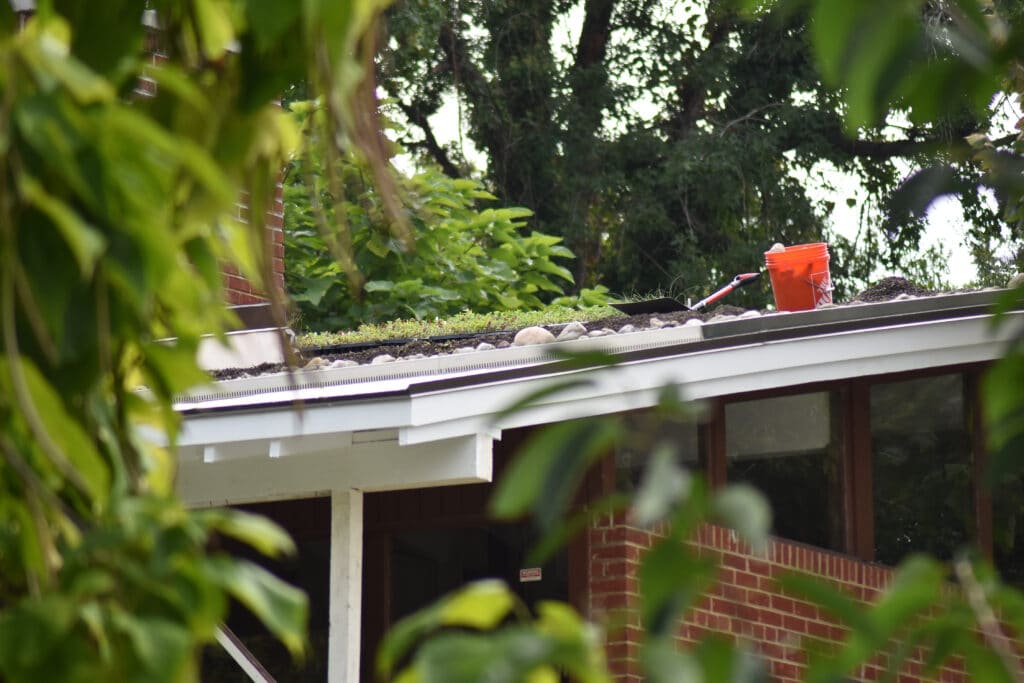If you’re assessing a new property or putting one up for sale, you need to be informed. We’ve laid out the top issues that we hear from private property owners, some of the causes, and stormwater best management practices that we would usually recommend. The good news is that many of these problems are pretty straightforward and can be addressed by stormwater best management practices.
Purchasing real estate is a significant endeavor. Whether it’s an investment or your primary residence, real estate represents a fairly stable and secure asset. That’s why there are few horror stories as palpable as the excited property owner discovering that their investment is actually a money pit.
Misplaced water can be a home’s worst enemy.
Water issues are one of the leading reasons real estate deals fall through, and with good cause. That’s because problems related to drainage and groundwater can be nagging and virtually impossible to correct entirely. Oftentimes, they become legacy issues only solved through costly new construction. So, it’s no surprise that many sellers don’t disclose the full extent of stormwater problems or drainage issues to buyers.
An inspection can help to discover property problems, but if your inspection doesn’t happen during or after a rainstorm, you might be stuck with a problem you never considered — think leaky roofs, sinking foundations, soggy yards, pooling water, and the list can go on. What’s even worse, is that in some cases your inspector may
Keep In Mind
An integrated approach works far better than an isolated singular “fix.” Only you understand your budget, property, and day-to-day stormwater experience. There may be a better or more appropriate option in your unique case. Several green infrastructure solutions could likely be a suitable fit. Feel free to set up a FREE Rainplanning Session. We hope that the following information can help you unpack your stormwater story so you can create a plan for long-term resilience and sustainability.
Common Stormwater Problems and The Most Common Solutions
Stormwater Problem: Permitting Issues Due to New Construction
Since many stormwater problems can be complex to rectify, we’ll starting with the easiest one first. If you’re planning a retrofit or an upgrade to your property, you may have experienced an unusual hiccup. As environmental guidelines increase to accommodate for urban sprawl, more and more applications get denied due to “Impervious surface lot coverage– too high.” This likely means that your current plans add to the existing hardscape — i.e. adding materials like concrete, asphalt, or blacktop.
Growing hardscapes prevent rainwater from behaving in the way that it would in the natural ecosystem. Instead of draining back into the ground, water rapidly flows over pavement, carrying whatever it picks up into the municipal sewer system. Stormwater drainage systems strive to achieve “biomimicry.” This is a fancy way of saying that these systems attempt to imitate (or mimic) the natural way that a local ecosystem deals with rainwater.
Local municipalities are responsible to the EPA (Environmental Protection Agency) for preventing the addition of gray infrastructure on private property. This is because 80% of all water pollution happens due to runoff from personal property, and over 70% of land in the USA is private property. Their toolbox includes incentivizing property owners who upgrade using green infrastructure and denying permits that would increase impervious surfaces on private property. Fortunately, several solutions improve permeability and help you break ground on your exciting plans.
Solution to Stormwater Permitting Issues
If you consider a new driveway or installing hard landscaping, permeable pavement may be an option. In cases where permeable pavement is installed correctly (by a professional), it lasts twice as long as standard building materials.
Planning an addition to your home, building a new structure, or installing a pool can also create significant permeability issues. In these cases, expanding the project to include conservation landscaping might be the ticket to winning over the permitting office. This could look like xeriscaping, planting trees, or planting native shrubs to capture stormwater.
Installing a rain garden can significantly increase your permeable footprint. This feature gives stormwater a place to flow, and the materials used help runoff sink stormwater back into the ground. This usually works best in a low point of your yard, and since it incorporates native plants accustomed to local weather patterns, rain gardens require very little maintenance.
Since property grade (the slope of your land), soil composition, and other technical factors come into play, we recommend using our Rainplan Builder to gather the details about your property to know what makes the most sense for your property.
Stormwater Problem: Poor Drainage
Poor drainage is a common stormwater problem and the number one cause of stormwater-related issues. Poor drainage presents itself in many ways, across your entire property – or in some cases, even from your neighbor’s property. For example, if you notice a lot of mosquitos after a rainstorm, you might have pooling water sitting somewhere on your property that fosters mosquito reproduction. (Gross, but true.)
The most common symptom is moisture in the basement or crawl space. This can be outright flooding, but it can also look like damp concrete, spalling bricks, and efflorescence (salty-looking residue on foundation walls). Most homeowners address this by building a french drain (a trough that goes around the interior wall of your foundation) or installing a sump pump. Those solutions only address the symptoms without considering the long-term damage that poor drainage can wield on your property.
Top symptoms and stormwater problems due to poor drainage:
- moss or mildew growth on walkways, concrete staining, and slip hazards
- basement or crawl space flooding and foundation damage
- water pooling (or flooding) on the driveway, garage, and home
- muddy planter areas and damage to your yard, potentially attracting mosquitoes and killing grass
- water draining from your neighbor’s property
- water leaking from the roof
- moss or mildew growth and staining on the roof
Stormwater Solutions for Poor Drainage:
Okay, we said that this is the most common problem, so it’s important to note that drainage issues don’t match with a “one size fits all” approach. The beautiful thing is that this presents you with many options for managing your stormwater. In most cases, the main goal is either finding solutions to sink water back into the water table or to divert excess water into a useable system or a natural system where it can drain on its own while naturally filtering out pollutants.
Best management practices like a dry creek or bioswale can move water off-site while filtering.
If your roof is approaching twilight and it’s time to replace it, installing a green roof will help your next roof last twice as long while providing additional insulation and giving you extra green space.
Stormwater Problem: Excessive Runoff
You’re a responsible property owner. You perform ongoing maintenance and take great care of your investment but there is only so much you have control over when it comes to rainfall. With longer rainfall patterns and more severe snowstorms, there’s an expected increase in heavier rain events with each passing year. So even if you do what you can to make sure your property drainage is taken care of, excessive runoff might still be a problem.
Stormwater Problems and Symptoms of Excessive Runoff:
- Lost plants, shrubs, or trees
- Bare soil where plants won’t grow because it’s too wet
- Structural erosion, cracking sidewalks, or eroding driveways
- Clogged storm drains (resulting in pooling water)
- Community water quality issues
Stormwater Solutions for Excessive Runoff
So, the first option to mitigate excessive runoff begins at the very top: your roof. Installing a green roof is something you’ll see around the nation’s capital and in some major metro areas. Installing a green roof will slow down falling stormwater, adds useable green space to your property, significantly increase insulation, and double (YES, DOUBLE) the life of your roof. The slope of your roof may limit your options, but getting a consultation can’t hurt. Also, if the roof doesn’t work as a viable solution, consider the roof on detached garages or carports.
Another option to mitigate excessive runoff is installing a water harvesting system. Depending on your budget and goals, the design of your rainwater harvesting system can look different. Maybe it’s a downspout connected to rain barrels. It could also be an underground cistern that feeds a gray water system for use inside your home.
Keep in Mind
We can’t say what your goals are, but rainwater harvesting is one of the most customizable, flexible, and creative ways to handle your stormwater. An important aspect is that harvested rainwater generally creates “gray water” instead of potable (drinking water), but every system is as unique as the property that it’s built upon. Adding additional filtration and water treatment to your system could be the first step in your goal to go “off the grid.”
If your issue is bare spots in your yard, this is an excellent opportunity to explore installing a rain garden. These unique landscaping features use native plants and increase your property value and offer the rainwater somewhere to go. To learn more about the technical aspects of a rain garden, you can check out our rain garden FAQs page.
If a dedicated rain garden isn’t your “thing,” then a more integrated approach would be conservation planting. This means using specific plants and landscaping materials to slow down and sink runoff back into the ground.
Finally, let’s not forget about permeable pavers. This is especially useful if a large portion of your property is covered with concrete. Impervious surfaces like patios and driveways create hardscapes that will eventually crack and erode as water flows over and around them. So, if you’ve noticed some wear and tear on your hardscapes, it could be a perfect time to replace them with permeable pavement. An added benefit is that this type of pavement lasts twice as long as a standard impermeable solution (like blacktop concrete).
Understanding Your Stormwater Story
Our Rainplanners see a variety of stormwater problems and can help you connect with RainPros who will help.
Pooling in backyards, leaking basements, neighbors fighting over water runoff into each other’s yards, etc.
The above are common problems but not an exhausted list. Your property has a unique history and landscape, so we strongly encourage you to build your Rainplan using our personalized Rainplan Builder.
This will help you better understand your project goals and where to start.
We have dedicated Rainplanners to help you when you are ready to start exploring the next steps with a contractor. You can schedule a free consultation call here!
It’s time to start creating your Rainplan!






